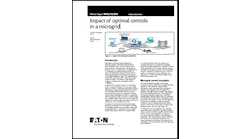The US Air Force and the Defense Logistics Agency-Energy has issued a request for information (RFI) in anticipation of an energy-as-a-service contract for Hanscom Air Force base in Massachusetts, a site where a microgrid is being contemplated.
The government expects to eventually undertake an energy-as-a-service pilot project that incorporates backup power, on-base microgrids or resilient interconnections to the power grid. A competitive solicitation for the pilot will be issued at a later date.
Ideally, the agency says that the provider would be solely responsible for operating an on-base electricity system. That includes on-site generation, power procurement and energy efficiency measures.
The RFI serves as a means to gather insight into how the project could be executed — in its words — whether conveyance of the electric utility system is needed or whether alternative arrangements are more favorable.
Using third-party funds, the Air Force hopes to demonstrate:
— An integrated approach to managing and procuring electricity at the base
— A utility services contract that can present a more attractive business case and be more efficient than overseeing multiple contracts
— Utility services delivered under a comprehensive long-term contract that incorporates the technical, physical and financial adjustments needed to fulfill the energy needs at the Air Force base
Hanscom AFB now procures power through short-term market purchases. The local utility, Eversource, provides electric distribution via a single interconnection to the base. A 20-year-old underground distribution system, owned by the government, serves 150 buildings, along with other missions, including for the Federal Aviation Administration at Hanscom Field.
The base has an average system load of 6.4 MW, peak load of 12 MW, and critical loads of less than 2 MW.
Via a 2016 base-wide energy savings performance contract, the base installed a 4.6 MW combined heat and power (CHP) plant, replaced oil-fired boilers with new natural gas-fired boilers at four buildings and added LEDs.
The new CHP plant, owned by the government, begins operation later in 2019 and will burn natural gas supplied from a new interstate pipeline connection. Hanscom plans to produce steam from the CHP plant, in conjunction with an existing central steam plant, for the base and other facilities.
The base also uses backup diesel generators ranging in size from 20 to 1,500 kW, which are dedicated to specific building-level loads and separate from the Hanscom electric distribution system via automatic transfer switches.
The Massachusetts Clean Energy Center awarded Hanscom AFB a grant in 2018 to conduct a microgrid feasibility study. Results are not yet available. The base also has conducted preliminary studies for up to 4 MW of on-site solar photovoltaics.
Interested parties may participate in an industry day in the Boston area on May 15, where they can ask questions of government officials. RFI responses are due by June 14 at 5 pm. The solicitation number is SP0600-19-R-0803 and it can be found on the Federal Bureau of Opportunities website at www.fbo.gov.
Learn more about energy-as-a-service by downloading the Microgrid Knowledge special report, “The Financial Decision-Makers Guide to Energy-as-a-Service Microgrids,” courtesy of Schneider Electric.








